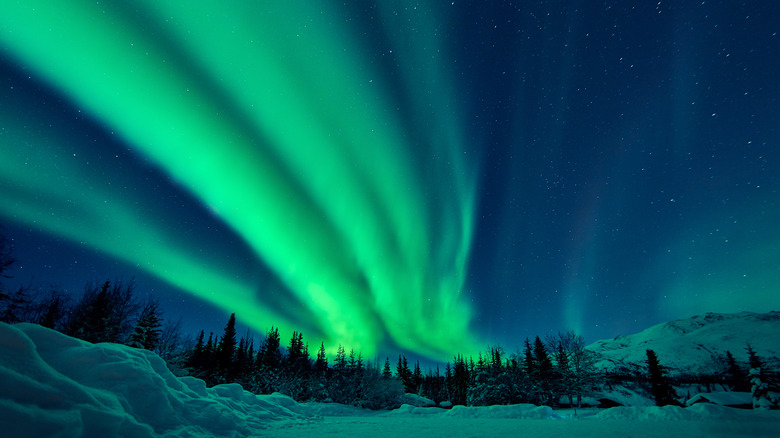The Best And Worst Things About Taking An Alaskan Cruise Depending On The Season
Alaska is one of the most wild and wonderful places to visit in the United States. It's the largest state in the nation and contains over 57 million acres of designated wilderness — which is 54% of the wilderness in the entire country. Within Alaska, you'll find more than 3 million lakes and 3,000 rivers. It's often referred to as "America's Last Frontier" as so much of it remains unspoiled and unexplored. It's the perfect destination for nature lovers, adventurers, and those who dream of traveling off the beaten path to lands untouched by the modern world.
Navigating Alaska's rugged landscape can be extremely challenging and even dangerous unless you're an experienced outdoor adventurer. Avalanches, bears, and extreme conditions are just a few of the risks travelers face when traveling through Alaska.
Most tourists who visit the gorgeous region choose to embark on an Alaskan cruise, which is a safe and convenient way to experience the natural beauty. According to the state's Resource Development Council, more than half of tourists who travel to Alaska arrive via a cruise ship. Cruising allows you to get up close and personal with remote glaciers, marine life, and so much more. Summer is certainly the busiest season for Alaskan cruises, but each season offers its own special magic (and some potential drawbacks).
Cruising Alaska in the spring and summer offers ideal weather (along with crowds)
Alaska has more than 6,000 miles of coastline, meaning there's plenty of epic views to enjoy right from the deck of your cruise ship. Summer is certainly the most popular season for Alaskan cruises. During the summer months, you can experience the magical midnight sun due to Alaska's proximity to the North Pole. The light outdoors will resemble twilight throughout the beautiful summer nights, which is a fascinating phenomenon for visitors that offers even more time to enjoy the sights and spot wildlife. Keep an eye out for bears, seals, and dolphins. The weather is enough of a reason to consider visiting Alaska during the high tourist season. Summer temperatures are pleasant and usually hover between 60 and 70 degrees Fahrenheit with plenty of sunshine. Furthermore, the towns and villages along your cruise route will be lively and full of activities to enjoy.
The spring months are also incredible times to visit. Whales usually begin to arrive back in Alaskan waters as early as April. Humpback whales congregate in various areas along the coast in May, while the best time to see Orcas is between May and June. Spring is also an excellent time to spot moose. Wildflowers begin to bloom as the earth awakens.
Of course, with summer and spring being ideal months for an Alaskan cruise, you can also expect the crowds and prices to match. Keep in mind, though, that cruises and land tours are often more affordable during the shoulder season. Book earlier in the spring to save some money.
Autumn and winter are great for wildlife and northern lights viewing (but the weather is no joke)
Temperatures begin to drop in Alaska as early as August and September, but Autumn is still a lovely time to embark on an Alaskan cruise. Wildlife is still abundant, and it's the perfect time to witness the salmon spawning in streams and rivers. Humpback whales are active in September, and you'll likely see Caribou on their way to winter pastures. Similar to the spring shoulder season, prices on cruises and activities in Alaska are less expensive in the early fall.
September through April are the best times to visit Alaska for stunning views of the northern lights, a sight that sits on the top of many travelers' bucket lists. In honor of the breathtaking natural phenomenon, Autumn and winter in Alaska are known as the Aurora Season.
The biggest drawback to cruising during this time is the cold itself. In fact, most Alaskan cruises don't operate after October due to the frigid winter temperatures. But if you're searching for the ultimate way to experience Alaska's winter wonderland, UnCruise offers a unique winter option in February and March. It's an excellent option for winter sports enthusiasts as it makes plenty of stops for skiing and snowboarding excursions. Snowshoeing and ice skating excursions on shore are also offered, as well as excellent chances of catching glimpses of the stunning Aurora Borealis.


